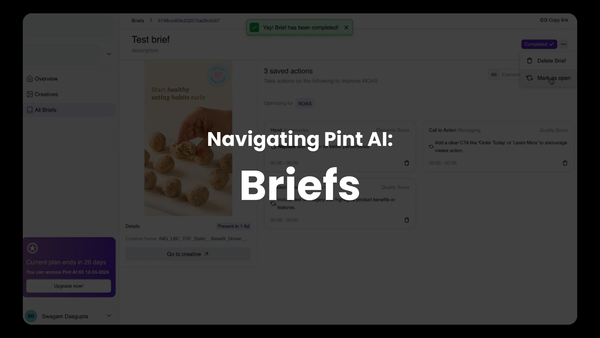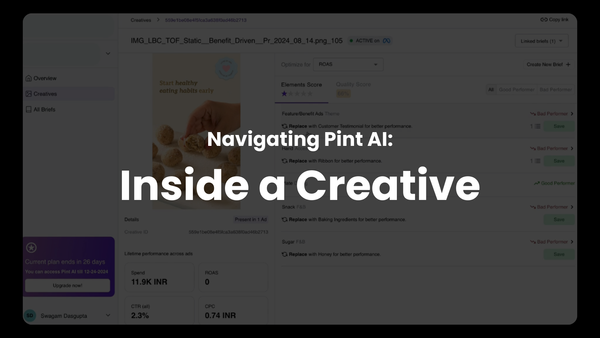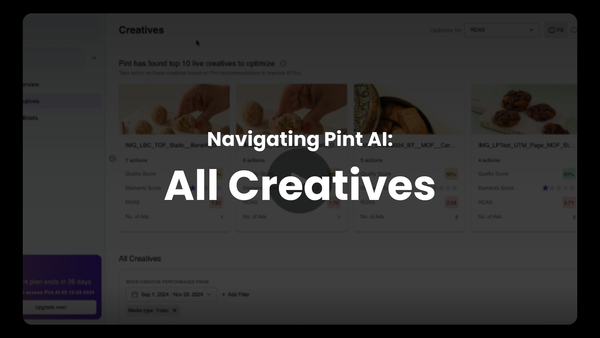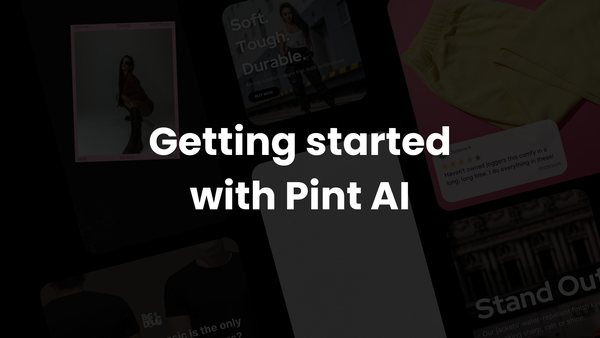How a Face Can Boost Ad Creative Performance
Including faces in your ad creatives can have a huge impact on returns, if done right. We uncover the psychological and emotional impacts of using faces, and how you can track their performance.
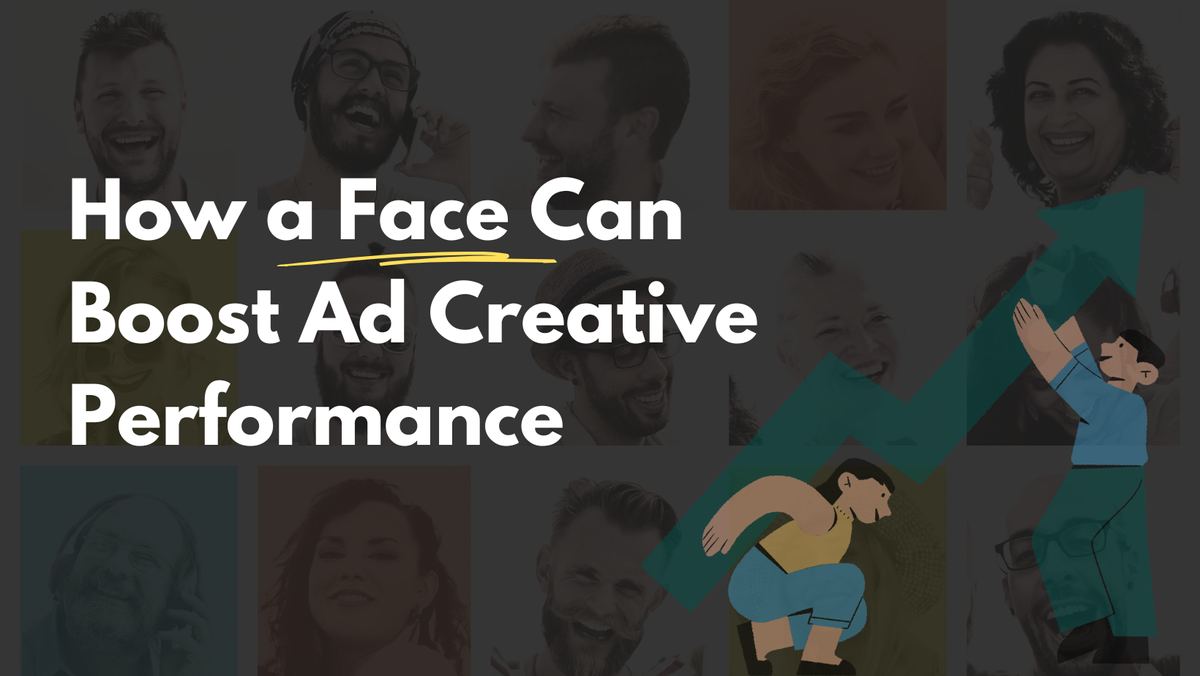
Using a person's face in your ads can be extremely beneficial.
There are several, very well-documented psychological and emotional impacts of using faces in ads that can be unlocked and can boose key performance metrics.
Here's how.
Using Faces Can Build Emotional Connection and Trust
Emotional Resonance:
Humans are inherently social beings, and our brains are wired to recognize and respond to faces. This natural inclination means that ads featuring human faces are more likely to create an emotional connection with viewers.
Faces can convey a range of emotions—happiness, sadness, surprise, trust—that resonate deeply with viewers on a personal level. This emotional resonance can translate into higher levels of engagement and trust.
Building Trust:
Ads that include faces, especially those showing expressions of joy or contentment, can evoke feelings of trust and reliability. For instance, a smiling face can make a brand appear more approachable and friendly, encouraging consumers to trust the product or service being advertised.
Trust is a critical component in the consumer decision-making process, and ads that foster this emotion are more likely to convert viewers into customers.
Example - Dove’s Real Beauty Campaign:
Dove’s "Real Beauty" campaign is a prime example of using faces to build trust and emotional connection. By featuring real women with diverse appearances, Dove challenged traditional beauty standards and promoted authenticity. This approach resonated with a broad audience, significantly enhancing brand perception and engagement.
Using Faces Can Build Attention and Engagement
Capturing Attention:
The human brain is naturally attracted to faces. This phenomenon, known as face pareidolia, means that ads featuring human faces are more likely to catch and hold viewers' attention.
When consumers see a face in an ad, their gaze is instinctively drawn to it, making the ad more noticeable amid a sea of digital content.
Sustaining Engagement:
Faces can also sustain viewer engagement by creating a focal point. Ads that include faces are not only more likely to be noticed but also remembered. This is crucial for brand recall and can lead to higher engagement rates.
For instance, an ad featuring a friendly face can leave a lasting impression, making consumers more likely to remember the brand and engage with it in the future.
Example - Progressive’s Flo:
Progressive’s use of Flo, a character portrayed by actress Stephanie Courtney, has become iconic. Flo’s friendly and approachable demeanor has helped Progressive humanize its brand, making it more relatable and memorable for consumers. This has translated into higher engagement and brand recall.
Using Faces Can Make Ads More Memorable
Research has consistently shown that people are better at remembering faces than other types of images or text. This makes ads featuring faces more memorable.
When consumers recall an ad, they are more likely to remember the brand and the product or service being advertised.
This enhanced recall can be particularly beneficial in crowded digital spaces where multiple brands are vying for attention.
Example - Red Bull’s Stratos Jump:
Red Bull’s campaign featuring Felix Baumgartner’s jump from the stratosphere not only showcased an extraordinary event but also leveraged Baumgartner's face and persona to create a deep emotional connection with viewers. This helped reinforce Red Bull’s brand identity as adventurous and daring, resulting in widespread engagement and brand recall.
Using Faces Can Quicken Decision-Making
The presence of a face in an ad can evoke positive emotions, which in turn can enhance decision-making processes. Positive emotions, such as happiness and comfort, generated by seeing a friendly or happy face can lead to better reception of the ad's message.
This can increase the likelihood of a positive response from the viewer, resulting in higher conversion rates.
Facilitating Engagement:
Positive emotions can also lead to increased cognitive flexibility and openness to information. When viewers feel good, they are more likely to consider a broader range of options and engage more deeply with the content.
This can facilitate a more favorable response to the ad, encouraging actions such as clicking on a link, signing up for a newsletter, or making a purchase.
Some Practical Applications and Strategies
Here's how you can think of using faces across different ad creatives.
- Static Image Ads:
Incorporate faces in static ads to quickly capture attention and convey emotion. Ensure the expression on the face aligns with the message of the ad. For instance, a smiling face can be used to promote a positive customer experience, while a thoughtful expression might be used for more serious content.

- Video Ads:
Video ads offer dynamic opportunities to use faces. Close-up shots of faces can create an intimate connection with viewers, while varying expressions can convey different emotions and messages. Testimonials and personal stories featuring real people can be particularly effective.
Dove's Real Beauty Campaign
- Interactive Ads:
Interactive ads that feature faces can enhance engagement by allowing users to interact with the person in the ad. For example, an ad that allows users to see different facial expressions or responses based on their interactions can create a more personalized and engaging experience.
Best Practices for Using Faces in Ads
So if you do want to ramp up the number of creatives that include a face, here are some things to keep in mind:
- Authenticity:
Use real people and genuine expressions to create an authentic connection.
- Diversity:
Feature a diverse range of faces to appeal to a broader audience. Representation matters, and seeing people who reflect their own identities can make viewers feel more connected to the brand. - Contextual Relevance:
Ensure the facial expressions and overall demeanor of the person align with the context and message of the ad. A happy, energetic face is suitable for a fun, lighthearted product, while a calm, composed expression might be better for a professional or serious message. - Eye Contact:
Faces that make direct eye contact with the viewer can create a sense of connection and trust. Eye contact can make the ad feel more personal and engaging.
Analyzing the Impact of Ads
Now just because you're using faces in ads, doesn't mean you can simply sit back and relax. You have to dig a little further to understand what kinds of emotions are working for you, and what kinds of faces and features are giving you the best returns.
Here are some ways you can do this:
- AI and Machine Learning:
Leverage AI and machine learning to analyze and optimize the use of faces in ads. AI tools can assess which facial expressions and features perform best in terms of engagement and conversion, allowing for data-driven decisions in ad creation. - A/B Testing:
Conduct A/B testing with different facial expressions and placements to determine what resonates best with your audience. This approach can help refine ad strategies and improve overall performance. - Emotion Analysis:
Use emotion analysis tools to gauge viewer reactions to faces in ads. Understanding the emotional impact of different expressions can help tailor ads to evoke the desired response. - Personalization:
Incorporate personalized faces in ads based on user data. For instance, showing faces that reflect the demographics or preferences of the target audience can enhance relevance and engagement.
Feeling a little lost about how to do any of this? Don't worry! That's what we're building at Pint AI.
Our creative analytics tool can automatically detect a face, tag its emotion, its gaze, the duration it lasts on screen if it's a video and much more; using this, you can easily figure out how to use faces to give you the highest return.
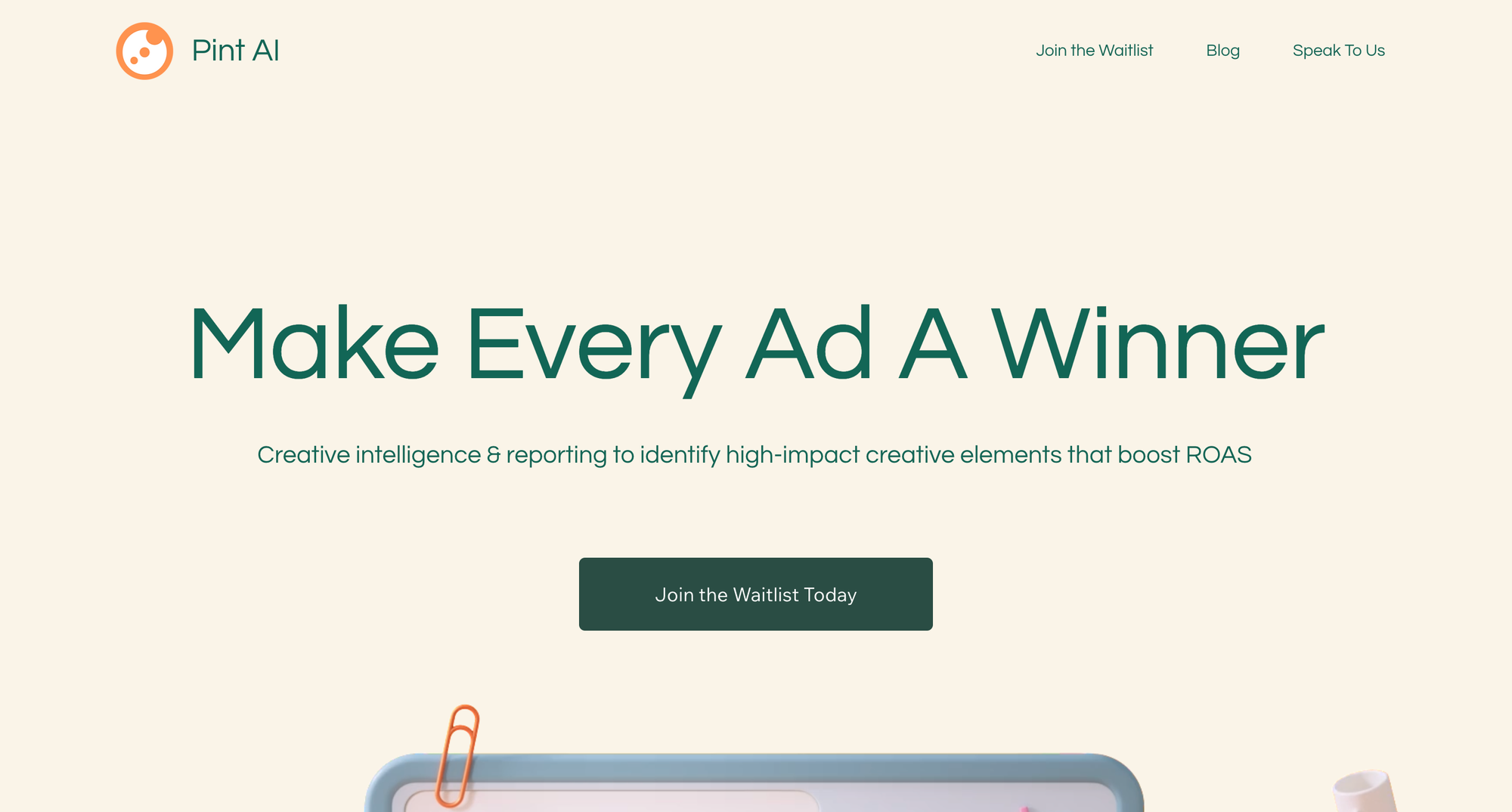
And faces are just a small set of things we can track; we track objects, ad copies, text on screen, hooks, ad themes and much more! Want to learn more? You can join our waitlist here:
Conclusion
Incorporating human faces in digital ad creatives can significantly enhance ad performance by fostering emotional connections, increasing trust and engagement, improving memory and recognition, and evoking positive emotions that facilitate decision-making.
By understanding and leveraging the psychological effects of human faces in advertising, marketers can design ads that resonate more deeply with their target audiences, ultimately leading to better performance and higher returns on investment.


